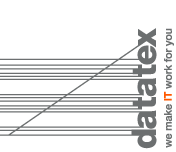
Datatex and the Chinese textile industry
Interview with Dr. Even Fang (Datatex Senior Consultant, Shanghai)
ENG
 Datatex is now the world’s leading software house in vertical ERP solutions for textile manufacturing, and has a presence in China with its Shanghai office. Can you tell Datatex Magazine readers about some success stories and some particularly interesting collaborations Datatex has initiated with Chinese textile companies?
Datatex is now the world’s leading software house in vertical ERP solutions for textile manufacturing, and has a presence in China with its Shanghai office. Can you tell Datatex Magazine readers about some success stories and some particularly interesting collaborations Datatex has initiated with Chinese textile companies?
Companies that introduce Datatex’s ERP solution reflect that it can effectively improve the management level and operational efficiency of enterprises, and bring higher competitiveness and business value.
It mainly includes the following aspects:
- Integration: through the Datatex system, enterprises can centralize the information of each department on one platform, realize the seamless connection and information sharing between various business functions, and improve the coordination efficiency among various departments within the enterprise.
- Data accuracy: the Datatex system can obtain data from all aspects of the enterprise in real time, and carry out unified management and processing to ensure the accuracy and completeness of the data, and avoid errors and duplications that may occur in manual input and transmission of data.
- Process standardization and automation: Datatex system is designed and optimized based on the business process of the enterprise, which can help enterprises to establish standard processes and norms, so as to improve work efficiency and quality. At the same time, the system can also automate some routine operations and tasks, reducing the time and cost of manual operation.
- Real-time monitoring and decision supporting: the Datatex system provides real-time data display and analysis functions, which can directly display the operation and key indicators of the enterprise through dashboards and reports, and help the management to understand the business status of the enterprise in time and make accurate decisions.
- Cost control and resource optimization: Datatex system can comprehensively manage and optimize the enterprise’s resources, including human resources, materials, warehousing, etc., to help enterprises plan and utilize resources reasonably, reduce costs and improve efficiency.
- Better supply chain management: through the Datatex system, enterprises can better manage the supply chain, including procurement, production, inventory and other links, achieve a balance between supply and demand and efficient distribution, so as to improve customer satisfaction and strengthen cooperation with suppliers.
In the three-year period 2020 – 2021 – 2022, due to the pandemic and the global supply chain crisis, the Chinese textile industry encountered some difficulties related to exporting to Western markets, difficulties also related to cost and logistics problems in transportation. How is the situation today? Have the problems related to international transportation been overcome?
In the three-year period you mentioned (2020-2022), the Chinese textile industry did face significant challenges in exporting to Western markets due to the pandemic and global supply chain disruptions. The cost and logistics problems in transportation also posed difficulties.
To mitigate the cost and logistics issues, the Chinese textile industry and international shipping companies have been working to streamline operations and find alternative transportation routes. Efforts have been made to optimize shipping schedules, enhance communication and coordination among stakeholders, and explore new logistics solutions. These measures have helped alleviate some of the transportation difficulties faced earlier.
However, it is important to note that the situation remains dynamic and subject to various factors such as the global pandemic situation, trade policies, and economic conditions. Therefore, it is essential for the Chinese textile industry to continue monitoring and adapting to the evolving circumstances to ensure smooth exports to Western markets.
How can Datatex’s products interface and dialogue with new robotics and Artificial Intelligence solutions?
The Datatex system can use artificial intelligence scheduling algorithms to optimize and improve scheduling results, and the developed interfaces can also connect automated transport vehicles, palletizing robots, automatic production lines, artificial intelligence automatic sorting equipment, and so on.
Recently, in an actual project launched, there has been such a business practice, in which Datatex’s ERP system and automated transport vehicles, palletizing robots, automated production robots are connected as a whole through our interface.
These include:
1) Automatic production: the Datatex system issues a work order, and after the employee starts the task, the automatic transport vehicles automatically transport the raw materials to the production-line-side warehouse according to the work order, the production line robot automatically feeds the material, starts the processing automatically, and notifies the automation to get out of the car and automatically transport to the appropriate finished product warehouse after the processing is completed.
2) Automatic picking: after the employee sends the shipping instruction through the Datatex system, it is transmitted to the WMS module, the automated transport vehicle picks the goods to the designated warehouse, and then it is transported to the delivery area to wait for express delivery to pick up the goods and then complete the shipping operation.
ZH
Datatex and the Chinese textile industry
Interview with Dr. Even Fang (Datatex Senior Consultant, Shanghai)
Datatex is now the world’s leading software house in vertical ERP solutions for textile manufacturing, and has a presence in China with its Shanghai office. Can you tell Datatex Magazine readers about some success stories and some particularly interesting collaborations Datatex has initiated with Chinese textile companies?
答: 引入Datatex的ERP解决方案的公司反映 ,系统有效地提高企业的管理水平和运营效率,带来更高的竞争力和商业价值。主要包括以下几方面:
- 整合性:通过Datatex系统,企业可以将各个部门的信息集中在一个平台上,实现各个业务功能之间的无缝衔接和信息共享,提高了企业内部各个部门之间的协同效率。
- 数据准确性:Datatex系统能够实时获取企业各个环节的数据,并进行统一管理和处理,确保数据的准确性和完整性,避免了手工录入和传递数据时可能出现的错误和重复。
- 流程的标准化和自动化:Datatex系统基于企业的业务流程进行设计和优化,可以帮助企业建立起标准的流程和规范,从而提高工作效率和质量。同时,DATATEX系统还可以自动化执行一些常规的操作和任务,减少了人工操作的时间和成本。
- 实时监控和决策支持:Datatex系统提供了实时的数据展示和分析功能,可以通过仪表盘、报表等方式直观地展示企业的运营情况和关键指标,帮助管理层及时了解企业的业务状况,做出准确的决策。
- 成本控制和资源优化:Datatex系统能够对企业的资源进行全面的管理和优化,包括人力资源、物料、仓储等,帮助企业合理规划和利用资源,降低成本,提高效率。
更好的供应链管理:通过Datatex系统,企业可以更好地管理供应链,包括采购、生产、库存等环节,实现供需平衡和高效配送,从而提高客户满意度并加强与供应商的合作关系。
In the three-year period 2020 – 2021 – 2022, due to the pandemic and the global supply chain crisis, the Chinese textile industry encountered some difficulties related to exporting to Western markets, difficulties also related to cost and logistics problems in transportation. How is the situation today? Have the problems related to international transportation been overcome?
答:在2020-2021-2022这三年期间,中国纺织业在向西方市场出口方面确实遇到了一些困难,特别是由于疫情和全球供应链危机导致的问题,运输成本和物流问题成为了挑战。
为了应对成本和物流问题,中国纺织业和国际航运公司一直在努力优化运作,并寻找替代的运输路线。他们致力于优化航运时间表,加强各利益相关方之间的沟通和协调,并探索新的物流解决方案。这些措施有助于缓解早期面临的运输困难。
然而,形势仍然具有很大的不确定性,并受到全球疫情形势、贸易政策和经济状况等各种因素的影响。因此,中国纺织业需要继续监测和适应不断变化的情况,以确保向西方市场的出口顺利进行 。
How can Datatex’s products interface and dialogue with new robotics and Artificial Intelligence solutions?
答:Datatex系统可以使用人工智能排产算法优化提高排产结果,也可以已经开发的接口连接自动化运输小车,码垛机器人,自动化生产线,人工智能自动分拣设备等等。
最近上线的一个实际项目中,已经有这样的业务实践,其中Datatex的ERP系统和自动化运输小车,码垛机器人,自动化生产机器人通过我们的接口连接成一个整体。包括:
- 自动生产:Datatex系统下发工单,员工开始任务后,自动化运输小车按工单需要自动运送原料到线边库,生产线机器人自动上料,自动开始加工,加工完成后通知自动化下车自动运输到合适的产成品库位。
- 自动拣货:员工通过 Datatex系统发送出运指令后,传送到WMS模块,自动化运输小车到指定库位拣货,运输到待发货区域等待快递取货后完成出运操作。

